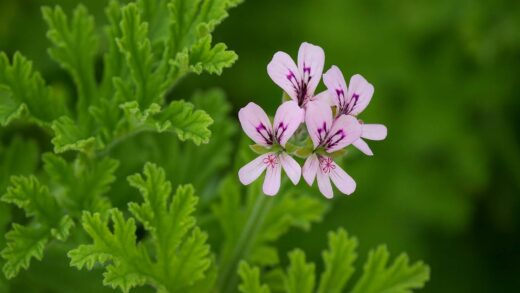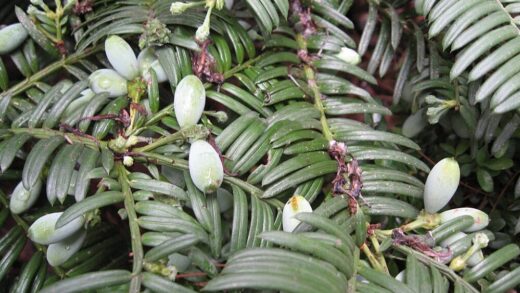Ensuring the survival of your blanket flowers through the winter months is a crucial step in enjoying their vibrant display year after year. As hardy perennials native to North America, they are generally well-equipped to handle cold temperatures, but their success depends heavily on the specific climate and, most importantly, the soil conditions during their dormancy. The primary threat to a blanket flower during the winter is not the cold itself, but rather the combination of cold and wetness. Understanding how to provide the right conditions for their dormant period will safeguard your plants and ensure they return with vigor in the spring.
The most critical factor for successful overwintering is, without a doubt, excellent drainage. Blanket flowers are highly intolerant of “wet feet,” and this is especially true during the winter when the plant is dormant and not actively taking up water. In heavy, waterlogged soil that freezes and thaws, the plant’s crown and roots are highly susceptible to rot, which is the most common cause of winter loss. Therefore, all efforts to ensure winter survival must begin with the initial planting site selection and soil preparation. A location with sandy, gravelly, or well-amended soil that sheds water quickly is the best insurance policy you can provide for your plants.
In late autumn, as the growing season comes to an end and the plant has been subjected to a few light frosts, you have a choice to make regarding cleanup. You can cut back the spent stems and foliage to about 10-15 centimeters from the ground. This creates a tidier appearance in the winter garden and removes any potential material that could harbor disease or pests. Cutting the plant back can also make it easier to apply a protective layer of mulch around the crown. This approach is often preferred by gardeners who prioritize a neat and orderly look for their dormant beds.
Alternatively, you can choose to leave the spent stems and seed heads standing throughout the winter. This method has several benefits. The standing foliage can help to trap insulating snow around the plant’s crown, providing a natural layer of protection against fluctuating temperatures. Furthermore, the seed heads offer a valuable food source for foraging birds such as goldfinches and juncos, adding life and interest to the winter landscape. If you choose this path, you can then cut back the old growth in late winter or early spring just before the new shoots begin to emerge from the base.
Preparing the plant for dormancy
As autumn progresses, the blanket flower will naturally begin to prepare itself for winter. The rate of growth will slow, flowering will cease, and the energy of the plant will be directed from the foliage down into the root system for storage. It is important to support this natural process. Cease all supplemental watering and, most importantly, do not apply any fertilizer late in the season. A late-season application of fertilizer, particularly one high in nitrogen, can stimulate a flush of tender new growth that will not have time to harden off before the first hard freeze, making the plant more vulnerable to winter injury.
More articles on this topic
The process of hardening off is a plant’s natural response to the changing environmental cues of shorter days and cooler temperatures. This physiological process increases the plant’s tolerance to freezing temperatures. Allowing your blanket flowers to experience the first few light frosts of the season is actually beneficial, as it signals the plant to enter full dormancy. Rushing to cover or protect your plants before they have had a chance to harden off can be counterproductive. Wait until after the ground has frozen or is about to freeze for the winter before applying any protective mulch.
A crucial step in autumn preparation is to ensure the area around the base of the plant is clean. Remove any fallen leaves, weeds, or other debris that has accumulated around the crown. This material can trap excess moisture against the plant, creating a perfect environment for crown rot to develop during the damp winter months. Good sanitation also eliminates potential hiding spots for pests like slugs or overwintering sites for fungal spores. A clean crown area is a healthy crown area, and this simple act of tidying up can make a significant difference in survival rates.
For blanket flowers grown in containers, the preparation is slightly different. The soil in pots is much more exposed to cold temperatures from all sides, making the roots more vulnerable to freezing than they would be in the ground. If you live in a climate where the ground freezes solid, it is often best to move the container to a more protected location. An unheated garage, a cold frame, or a sheltered spot against the house where it is protected from harsh winds and excessive moisture is ideal. The goal is to keep the roots frozen but protected from the freeze-thaw cycles that can be so damaging.
The role of mulch in winter protection
Mulching can be a valuable tool for protecting blanket flowers over the winter, but it must be done correctly. The purpose of a winter mulch is not to keep the plant warm, but rather to keep the soil frozen and at a consistent temperature. The repeated freezing and thawing of soil during the winter can heave plants out of the ground, exposing their delicate roots to the drying winds and cold air. A layer of mulch acts as an insulator, moderating the soil temperature and preventing this damaging heaving action.
More articles on this topic
The right time to apply winter mulch is critical. Do not apply it too early in the autumn. You must wait until after the ground has frozen, typically in late autumn or early winter. Applying mulch to warm, unfrozen ground can trap heat and moisture, which may delay the plant’s dormancy and encourage rot. It can also provide a cozy winter home for voles and other rodents that might be tempted to feed on the plant’s crown and roots during the cold months. Patience is key; wait for a sustained period of cold weather before you act.
The type of mulch you choose is also very important. You need a material that is light, airy, and will not become a sodden, compacted mat over the winter. Avoid using heavy materials like whole leaves or dense compost, as these can trap too much moisture against the crown and lead to rot. Excellent choices for a winter mulch include shredded leaves, pine needles, straw, or evergreen boughs. These materials insulate the soil while still allowing for some air circulation, reducing the risk of creating an overly wet environment around the plant’s crown.
Apply a loose, airy layer of your chosen mulch about 5-10 centimeters deep, covering the ground around the base of the plant but being careful not to pile it directly up against the stems or crown. The goal is to insulate the soil around the roots, not to smother the plant itself. In the early spring, as the threat of hard freezes has passed, be sure to gradually remove the mulch. Raking it away from the crown will allow the soil to warm up more quickly and will permit the new spring growth to emerge unimpeded into the sunlight.
Special considerations for different climates
Winter care for blanket flowers can vary significantly depending on your specific climate and hardiness zone. In milder climates where the ground rarely freezes, blanket flowers often require very little in the way of special winter protection. In these areas, the primary concern remains ensuring excellent drainage to cope with potentially wetter winter seasons. The evergreen or semi-evergreen basal foliage may persist through the winter, and the main task is simply to clean up any dead stems from the previous season to make way for new spring growth.
In colder climates, where winter temperatures regularly drop well below freezing and snow cover is reliable, the snow itself acts as a fantastic natural insulator. A deep, consistent blanket of snow protects the plants from harsh, drying winds and keeps the soil temperature stable, preventing the damaging effects of freeze-thaw cycles. In these regions, a simple autumn cleanup and perhaps a light mulch applied after the ground freezes is often all that is needed. The blanket flower’s natural hardiness is usually sufficient to see it through the winter under these conditions.
The most challenging climates for overwintering blanket flowers are those that experience cold temperatures without reliable snow cover, or those with winters characterized by frequent freezing and thawing. In these zones, the plants are exposed to the full brunt of desiccating winds and fluctuating soil temperatures. It is in these regions that the proper application of a winter mulch is most critical. The mulch provides the insulation that snow cover would otherwise offer, protecting the plant’s crown and roots from the environmental stress.
Regardless of your climate, the hardiness of the specific blanket flower variety you are growing is a key factor. While many common varieties are reliably hardy to USDA Zone 3, some newer or more specialized cultivars may be less cold-tolerant. Always check the hardiness rating for your particular plant. If you are growing a variety that is borderline hardy for your zone, it is wise to provide it with extra winter protection, such as a thicker layer of mulch or a location in a more sheltered microclimate within your garden, such as near a south-facing wall.


















